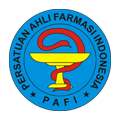Formulasi dan Evaluasi Lotion Kombinasi Magnesium Oil dan Minyak Biji Kelor (Moringa Seed Oil)
DOI:
https://doi.org/10.26630/jk.v12i1.2491Keywords:
Antioxidant, Lotion, Magnesium lotion, Moringa, Seed oil.Abstract
Magnesium plays a role in nearly 600 important metabolic and enzymatic reactions in the body. In developing countries, 10-30% of people have a magnesium deficiency. Magnesium deficiency can result in migraines, insomnia, leg cramps, anxiety, arrhythmias, diabetes mellitus, hypertension, etc. Transdermal magnesium supplementation has been shown to be useful as a muscle relaxant in treating leg cramps. Moringa Oleifera Seed Oil contains antioxidants, anti-aging, amino acids, collagen, omega 3,6 and 9, complete vitamins and minerals that are widely used in cosmetics. This experimental study aims to obtain a combination lotion formula of magnesium oil and moringa seed oil that meets the requirements and functions as an intake of magnesium and antioxidants. The data obtained were compared with the standard requirements for topical lotion preparations. The formula is designed with a magnesium chloride concentration of 250 mg / 5 ml, with four concentrations of moringa seed oil F1 (3%), F2 (6%), F3 (9%), and F4 (12%). Based on the results of the study, it was obtained that the dosage data was white, the semi-solid texture was easy to pour with a lavender aroma. All the formulas meet the requirements of pH (5,0-5,5) and some of the formulas meet the requirements of dispersion, specific gravity, viscosity. The Antioxidant activity of all formulas is very weak. Only one formula (F4) meets all the requirements for the lotion preparation.
References
Agoes, G. (2015). Sediaan Kosmetika (SFI-9) (Cetakan 1). Penerbit ITB.
Badan Standardisasi Nasional. (1996). Sediaan Tabir Surya. Dewan Standardisasi Nasional, 16(4399), 1–3.
Chandrasekaran, NC., Washington YS., Yousuf H Mohammed., Jeffrey EG., Michael SR, B. R. (2016). Permiation of topically aplied Magnesium ions through human skin is facilitated by hair follicles. Magnesium Research, 29(2), 35–42. https://doi.org/10.1684/mrh.2016.0402
DiNicolantonio, J. J., O’Keefe, J. H., & Wilson, W. (2018). Subclinical magnesium deficiency: A principal driver of cardiovascular disease and a public health crisis. Open Heart, 5(1). https://doi.org/10.1136/openhrt-2017-000668
Hasanah, U., Yusriadi, Y., & Khumaidi, A. (2017). Formulasi Gel Ekstrak Etanol Daun Kelor (Moringa oleifera Lam) Sebagai Antioksidan. Natural Science: Journal of Science and Technology, 6(1), 46-57. https://doi.org/10.22487/25411969.2017.v6.i1.8079
Karim, K., Jura, M. R., & Sabang, S. M. (2015). Uji aktivitas antioksidan ekstrak daun patikan kebo (euphorbia hirta l.). Jurnal Akademika Kimia, 4(2), 56-63.
Kass, L., Rosanoff, A., Tanner, A., Sullivan, K., McAuley, W., & Plesset, M. (2017). Effect of transdermal magnesium cream on serum and urinary magnesium levels in humans: A pilot study. PLoS ONE, 12(4), 1-11. https://doi.org/10.1371/journal.pone.0174817
Krisnadi, AD. (2015). Kelorina. In Kelor Super Nutrisi (2015th ed.).
Lachman, L; H, Lieberman ; Joseph, L. . (2008). Teori dan Praktek Farmasi Industri II (Ed.3). UI-Press.
Molyneux, P. (2004). The use of the stable free radical diphenylpicrylhydrazyl (DPPH) for estimating antioxidant activity. Songklanakarin J. sci. technol, 26(2), 211-219.
National Institutes of Health NIH. (2018). Magnesium-Health Professional Fact Sheet. Fact Sheet for Health Professionals (pp.1-9).
Popovic, Nicholas G., Ansel, H. C. (2013). First Pass Metabolism Intro.pdf. 6–21.
Solekah, F. (2017). Perbedaan Ketinggian Tempat Tumbuh Terhadap Kandungan Flavonoid dan Beta Karoten Buah Karika (Carica pubescens) Daerah Dieng Wonosobo. Prosiding Seminar Nasional Pendidikan Biologi Dan Biologi, B75-81.
Sudaryanto. (2016). aktivitas antioksidan minyak biji kelor yang diekstraksi dengan N Hexana, Metanol dan Etanol. Journal Teknotan, 10, 16-21.
Sugihartini, N., Fajri, M. A., & Rahmawati, D. R. (2019). Formulation of Moringa oleifera Leaf Extract in Lotion and Gel as Sunscreen. Proceedings of the 1st Muhammadiyah International Conference on Health and Pharmaceutical Development, 154-158. https://doi.org/10.5220/0008241001540158
Suphachai, C. (2014). Antioxidant and anticancer activities of Moringa oleifera leaves. Journal of Medicinal Plants Research, 8(7), 318-325. https://doi.org/10.5897/jmpr2013.5353.
Suryadevara V, Doppalapudi S, S. R. L., & Anne R, M. M. (2018). Formulation and Evaluation of Anti-Inflammatory Cream by Using Moringa oleifera Seed Oil. Pharmacognosy Research, 10(2), 95-204.
Tranggono, R. dan L. F. (2007). Buku Pegangan Ilmu Pengetahuan Kosmetika (J. Djajadisastra (ed.)). Gramedia Pustaka Utama.
Unuigbe, Charles A., et all. (2014). Phytochemical and antioxidant evaluation of Moringa oleifera (Moringaceae) leaf and seed. Pharmacy and Bioresources, 11, 51-57. https://www.researchgate.net/publication/277939976_Phytochemical_and_antioxidant_evaluation_of_Moringa_oleifera_Moringaceae_leaf_and_seed
Warra, A. (2014). Research and Reviews : Journal of Pharmaceutics And Nanotechnology A Review of Moringa Oleofera Lam Seed Oil Prospects in Personal Care. RRJPNT, 2(3), 31-34.
Werdhasari, A. (2014). Peran Antioksidan Bagi Kesehatan. Indonesian Journal of Biotechnology Medicine, 3(2), 59-68. https://doi.org/10.22435/jbmi.v3i2.4203.59-68.
Downloads
Additional Files
Published
Issue
Section
License
Authors who publish in this journal agree to the following terms:
- Authors retain copyright and grant the journal right of first publication with the work simultaneously licensed under a Creative Commons Attribution License (CC BY-SA 4.0) that allows others to share the work with an acknowledgment of the work's authorship and initial publication in this journal.
- Authors can enter into separate, additional contractual arrangements for the non-exclusive distribution of the journal's published version of the work (e.g., post it to an institutional repository or publish it in a book), with an acknowledgment of its initial publication in this journal.
- Authors are permitted and encouraged to post their work online (e.g., in institutional repositories or on their website) prior to and during the submission process, as it can lead to productive exchanges, as well as earlier and greater citation of published work.















